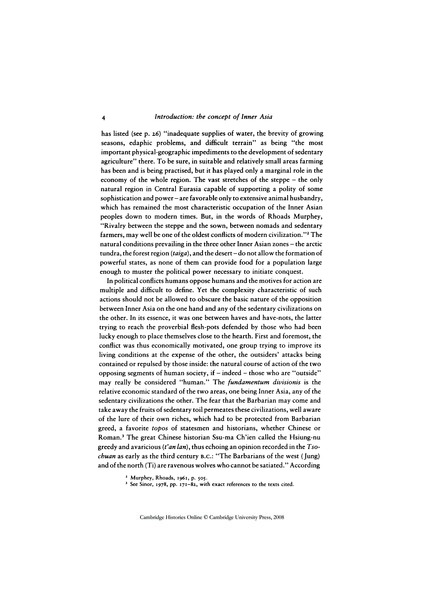Introduction: The concept of Inner Asia
Metadata
collection
identifier
8796db86-b526-4e7c-bcdf-d8f025ed82f6
creator
type
coverage
description
If the continents of Europe and Asia are conceptual entities, Eurasia - the combined land mass of the two - is a physiogeographical one. Each of the sedentary civilizations - in loose terminology Europe, the Middle East, India, Southeast Asia and East Asia - is a unique combination of cultural features. Some of these may appear in more than one area; yet an association of various components, moulded by a unique historical process and greatly influenced by national environment, made each of these regions different from the others. The frontier of Inner Asia is unstable; it has varied from age to age, shifting according to the balance of power between its own population and that of the surrounding, sedentary civilizations. The military efficiency of a nomad cavalry force was a function of its size, but the relationship between the number of horses and their military value was not a mathematical constant but a geometric progression.
publisher
Cambridge University Press
source
https://doi.org/10.1017/CHOL9780521243049.002
Sinor, Denis, ed. The Cambridge history of early Inner Asia. Vol. 1. Cambridge University Press, 1990.
rights
Copyright Cambridge University Press
subject
date
1990
language
files
| df-pdf | 1.4 MiB | 2017-12-23 15:33:51 | |
| metadata-en | docx | 79.0 KiB | 2018-03-16 16:41:07 |
